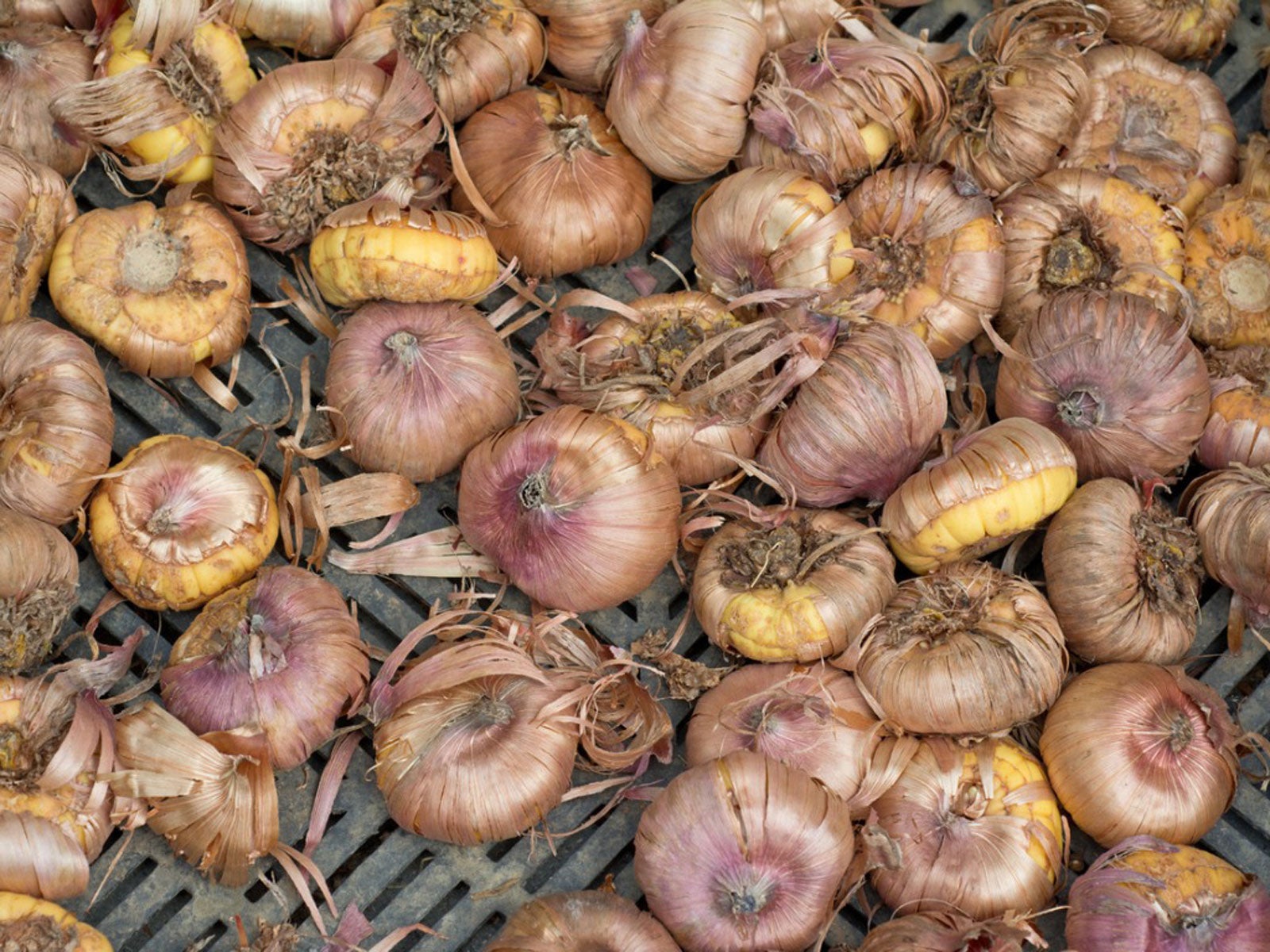Gladiolus Plants With Scab – Controlling Gladiolus Scab On Corms


Gladiolus plants grow from large, flattened bulbs called corms. One major disease of these flowering plants is called scab. Scab on gladiolus is caused by the bacterium Pseudomonas syringae and it attacks the gladiolus corms. If you have gladiolus plants with scab, you’ll want to learn more about this condition.
Read on for information about recognizing, preventing, and controlling gladiolus scab.
Scab on Gladiolus
How do you know if you have gladiolus plants with scab? The initial symptoms are small dots on lower leaves. These develop into round, water-soaked spots initially a pale-yellow shade. Over time they darken to black or brown.
Scab on gladiolus has entered the second stage of the disease when the shallow lesions look sunken, with raised margins that have the texture of scabs. These enlarge and grow together forming large areas of disease.
The diseased spots exude a gummy yellow brown substance. In late stages, scab causes rotting of the neck or the base of the plants. All gladiolus plants with scab look unattractive and sickly and those most affected will die.
Controlling Gladiolus Scab
In order to start preventing or controlling this disease, you need to understand it. The bacteria will form on corms then overwinter in the soil. They can last in both locations for up to two years, which makes controlling gladiolus scab more difficult.
Some types of situations make scab more likely. For instance, you’ll see more scab on gladiolas in rainy weather, when the soil is wet and the weather warm. Heavy application of nitrogen fertilizer also encourages the bacteria to grow.
Sign up for the Gardening Know How newsletter today and receive a free copy of our e-book "How to Grow Delicious Tomatoes".
Gladiolus Scab Treatment
The best gladiolus scab treatment involves monitoring and care of the corms. Inspect the corms carefully before you plant them. If they appear to be infected, do not put them in your garden soil. Check the corms again when you take them out of the soil for winter storage. Dry them well before storing them in a cool, well-ventilated spot.
Any injury to the corm increases your plant’s chances of needing gladiolus scab treatment. Look out for bulb mites, grubs, and wireworms in the soil and deal with them if they do appear. Use only sterilized pruning tools and only prune during dry weather to avoid spreading the bacterial.
Finally, rotate gladiolus planting beds. Never plant these flowers in the same place more than a few years in a row.

Teo Spengler is a master gardener and a docent at the San Francisco Botanical Garden, where she hosts public tours. She has studied horticulture and written about nature, trees, plants, and gardening for more than two decades, following a career as an attorney and legal writer. Her extended family includes some 30 houseplants and hundreds of outdoor plants, including 250 trees, which are her main passion. Spengler currently splits her life between San Francisco and the French Basque Country, though she was raised in Alaska, giving her experience of gardening in a range of climates.